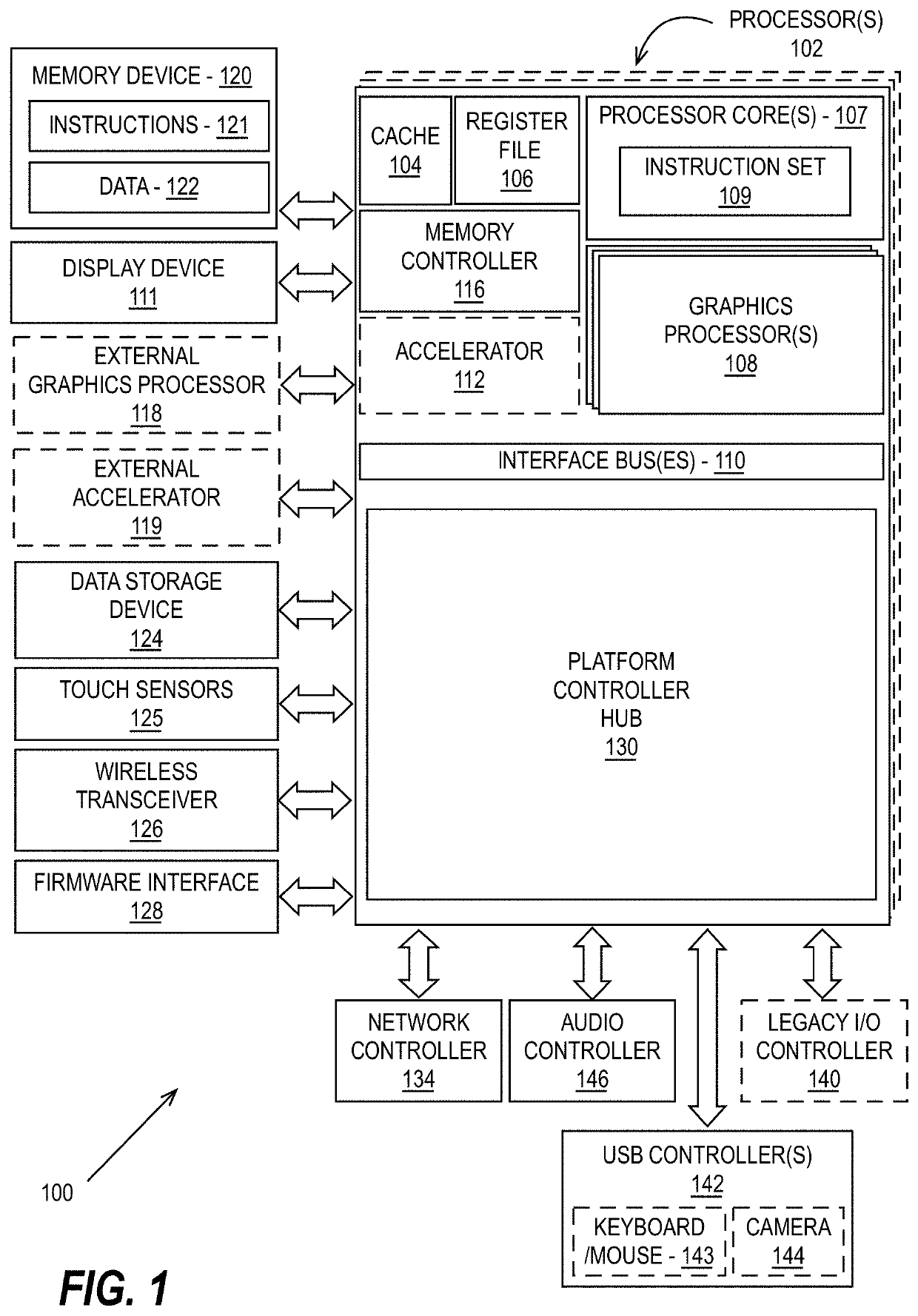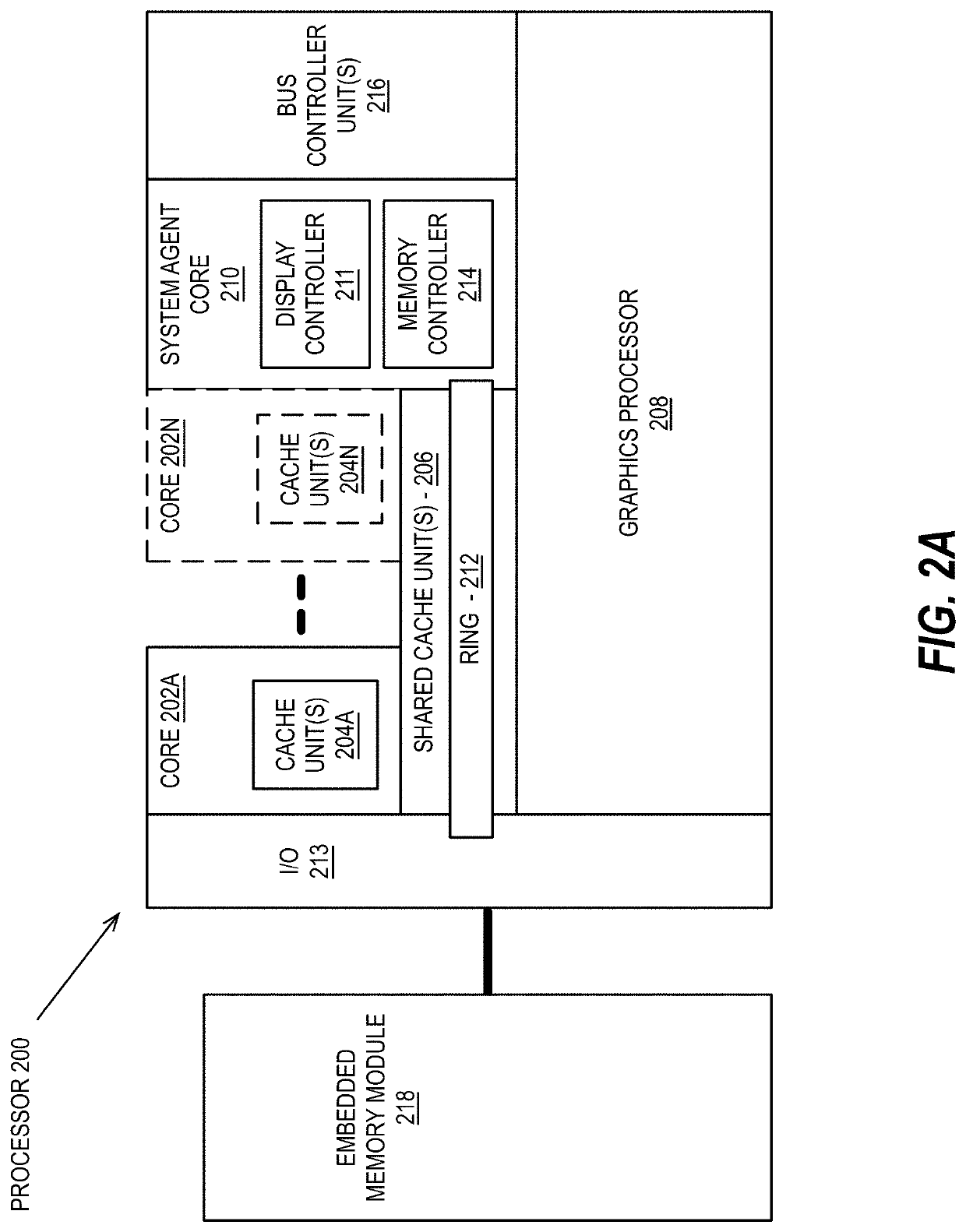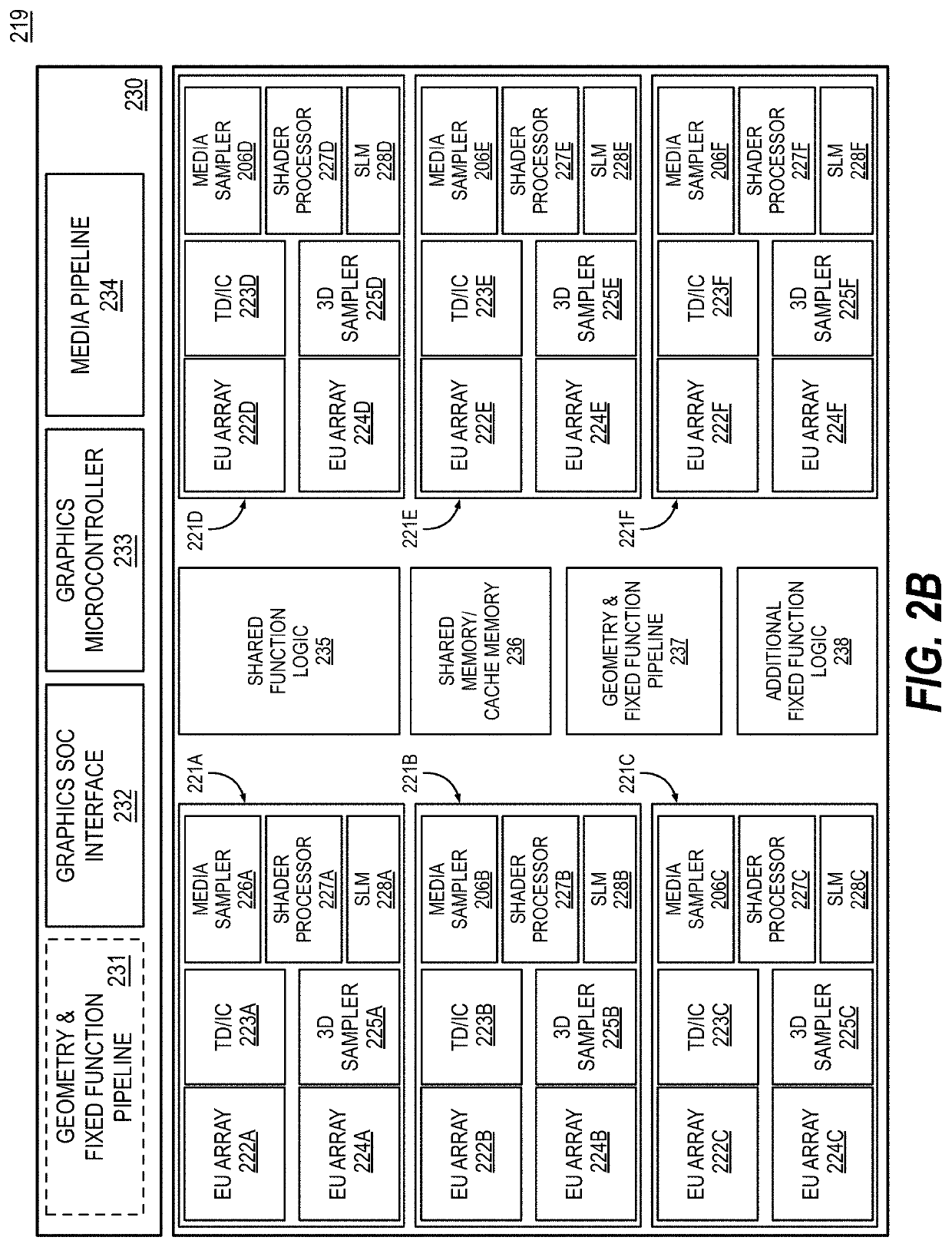Apparatus and method for double-precision ray traversal in a ray tracing pipeline
a pipeline and double-precision technology, applied in the field of graphics processors, can solve problems such as too resource-intensive for real-time performan
- Summary
- Abstract
- Description
- Claims
- Application Information
AI Technical Summary
Benefits of technology
Problems solved by technology
Method used
Image
Examples
example neural
Network Implementations
[0265]There are many types of neural networks; a simple type of neural network is a feedforward network. A feedforward network may be implemented as an acyclic graph in which the nodes are arranged in layers. Typically, a feedforward network topology includes an input layer and an output layer that are separated by at least one hidden layer. The hidden layer transforms input received by the input layer into a representation that is useful for generating output in the output layer. The network nodes are fully connected via edges to the nodes in adjacent layers, but there are no edges between nodes within each layer. Data received at the nodes of an input layer of a feedforward network are propagated (i.e., “fed forward”) to the nodes of the output layer via an activation function that calculates the states of the nodes of each successive layer in the network based on coefficients (“weights”) respectively associated with each of the edges connecting the layers. ...
examples
[0544]The following are example implementations of different embodiments of the invention.
[0545]Example 1. An apparatus comprising: a bounding volume hierarchy (BVH) generator to construct a BVH comprising a plurality of hierarchically arranged BVH nodes; a ray storage to store rays to be traversed through one or more of the BVH nodes; ray traversal circuitry comprising a first plurality of 64-bit arithmetic logic units (ALUs) which natively support double-precision floating point operations, the ray traversal circuitry to use at least a first ALU of the one or more ALUs to traverse a first ray through a first BVH node at a double-precision floating point precision to generate double-precision floating point traversal results; a plurality of execution units (EUs) coupled to the ray traversal circuitry, at least one of the plurality of EUs comprising a second plurality of 64-bit ALUs capable of natively performing double-precision floating point operations, the at least one of the pl...
PUM
 Login to View More
Login to View More Abstract
Description
Claims
Application Information
 Login to View More
Login to View More - R&D
- Intellectual Property
- Life Sciences
- Materials
- Tech Scout
- Unparalleled Data Quality
- Higher Quality Content
- 60% Fewer Hallucinations
Browse by: Latest US Patents, China's latest patents, Technical Efficacy Thesaurus, Application Domain, Technology Topic, Popular Technical Reports.
© 2025 PatSnap. All rights reserved.Legal|Privacy policy|Modern Slavery Act Transparency Statement|Sitemap|About US| Contact US: help@patsnap.com



